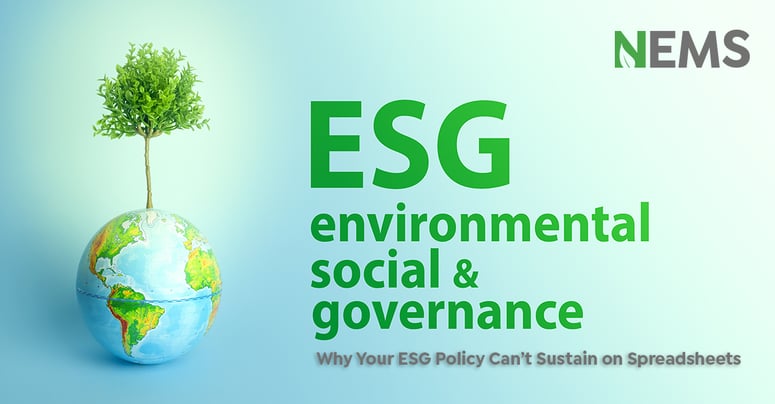 ESG policies are important aspects of any organization trying to achieve business excellence while making sure they remain sustainable, green, and impactful.
ESG policies are important aspects of any organization trying to achieve business excellence while making sure they remain sustainable, green, and impactful.
Environmental Social Governance(ESG) and the Current World Scenario
Ever since the establishment of the Intergovernmental Panel on Climate Change (IPCC) in 1989, Climate Change has been brought into the limelight, and the data on degradation has only been increasing. IPCC’s latest report on Environmental Degradation is a farewell to the earth as we know it, and an ode to humanity’s achievements in science and technology. While global organizations rally for environmental preservation, framework-setting by institutions such as CDP, the Global Reporting Initiative (GRI), and the Sustainability Accounting Standards Board (SASB) pull industry focus in multiple directions.
Environmental preservation needs a focused direction to remain both viable and decision-based for industry leaders. A unified system that aligns internal company data in keeping with regulation policies is the need of the hour, for all businesses. For sustainability is no longer an alternative, but the norm.
Pitfalls of Multiple ESG Policies
Going through the guidelines of multiple ESG policies is both time-intensive and confusing. There are multiple obstacles in the path of trying to get these right, such as -
- Increased Time for Reporting:
As companies rush to accumulate data to add to reports, a worrying realization occurs. As companies, are we spending more time on creating environmental reports than we are on developing environmental solutions?
The time it takes to train staff across multiple ESG guidelines is time better spent in improving ESG policies. To manually create reports as per CDP, GRI, and SABC norms can be time-consuming and tiresome.
- Increased Manpower:
Another new reporting framework means another person added to the workforce. And if not another person, definitely extra hours on to the job profile of an already overworked person. This increase in manpower can drain our companies of both financial and human resources, leaving little room for environmental activation.
- A need for multiple software solutions:
Much like creating a need for increased human capital, ESG reporting can also create a need for increased computing power and multiple software solutions. For businesses looking to scale, this can be a tiresome expense with (seemingly) no instant ROI.
The Need For a Unified Sustainability Reporting Solution
In a hybrid work-world teams are scattered all over the globe and collecting ESG data from these multiple groups can be a nightmare. Not only are the time zones different, so are the quality protocols and delivery efficiencies. A combined overview of these multiple processes can lend transparency to an organization.
A unified sustainability reporting solution can help enterprises reduce costs, save manpower, and enhance control. Organizing all sustainability report factors under one umbrella can allow organizations to scale their actual environmental engagement policies while leaving their analysis to AI-powered software.
ESG efforts are crucial to global business success in the modern world. But monitored across generic spreadsheets and data tools, ESG-oriented organizations cannot make sense of this scattered data in a purposeful manner.
Think of it this way, you’ve collected the data on waste disposal, energy consumption, carbon emissions, and social responsibility. But it lies scattered across different charts, graphs, and interviews. Not just that, it takes ages to make sense of the data because it exists in different formats and follows no relational structure. It takes manpower, time, and immense patience to compile all of this data into one report for one entity.
What an effective unified reporting solution does is, create a usable analysis in one place. It provides an easy-to-use dashboard that is accessible globally. Sustainability analytics drawn from Big Data engines are powerful, impactful, and resourceful, and indispensable when they come with global access. They reduce the time taken to create reports, as well as create transparency and efficiency in operations.
A One-Stop Solution for Sustainability
Monitoring Carbon Emissions in accordance with ESG Scope 1,2 and 3, CDSB’s principles of relevance and Materiality, and CDP’s questionnaires can seem like a mammoth task to anyone trying to run its operations in the post-pandemic landscape.
NEMS Panorama provides cross-departmental reporting that eases a company’s journey into environmental reporting. Its transparency and consistency are key performance indicators that are presented in customizable tables, figures, and graphs.
NEMS Panorama aims to smoothen the transition for your business to be an environmentally-conscious brand. If you are taking the steps to reduce your environmental impact, we want to pave the road for long-term conscious action to safeguard our collective future on this planet. As the hours tick by in our effort to save mankind from the self-created disaster of climate change, take the first steps today.
